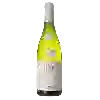
Winery Jean-Pierre MellenotteMercurey
This wine generally goes well with poultry, beef or veal.
Food and wine pairings with Mercurey
Pairings that work perfectly with Mercurey
Original food and wine pairings with Mercurey
The Mercurey of Winery Jean-Pierre Mellenotte matches generally quite well with dishes of beef, veal or game (deer, venison) such as recipes of american style beef marinade, vital tone / vitello tonnato (italy) or stuffed duck or goose neck.
Details and technical informations about Winery Jean-Pierre Mellenotte's Mercurey.
Discover the grape variety: Peloursin
Peloursin is an ancient grape variety from the Grésivaudant Valley in Isère. Its bunches are of medium size. They are conical-cylindrical, compact and winged. The berries are rather large and covered with a thin bluish-black or rarely grey skin. The peloursin is now endangered. It only occupies half a hectare and is almost never propagated. This variety buds late. The grapes can be picked from the twentieth day after the chasselas harvest. Peloursin's bearing is somewhat sloping. This variety is very vigorous and can become very productive over the years as its stocks become larger and larger. However, it must be protected from black rot and grey rot, which it is particularly afraid of. The wine produced from Peloursin has a fairly good colour, astringent but still ordinary.
Informations about the Winery Jean-Pierre Mellenotte
The Winery Jean-Pierre Mellenotte is one of of the world's greatest estates. It offers 1 wines for sale in the of Mercurey to come and discover on site or to buy online.
The wine region of Mercurey
The wine region of Mercurey is located in the region of Côte Chalonnaise of Burgundy of France. Wineries and vineyards like the Domaine François Raquillet or the Domaine Michel Juillot produce mainly wines red and white. The most planted grape varieties in the region of Mercurey are Pinot noir, Chardonnay and Gamay noir, they are then used in wines in blends or as a single variety. On the nose of Mercurey often reveals types of flavors of non oak, green pear or dark fruit and sometimes also flavors of tomatoes, white pepper or cassis.
The wine region of Burgundy
Bourgogne is the catch-all regional appellation title of the Burgundy wine region in eastern France ("Bourgogne" is the French name for Burgundy). Burgundy has a Complex and comprehensive appellation system; counting Premier Cru and Grand Cru titles, the region has over 700 appellation titles for its wines. Thus, Burgundy wines often come from one Vineyard (or several separate vineyards) without an appellation title specific to the region, Village or even vineyard. A standard Burgundy wine may be made from grapes grown in one or more of Burgundy's 300 communes.
The word of the wine: Yeast
Micro-organisms at the base of all fermentative processes. A wide variety of yeasts live and thrive naturally in the vineyard, provided that treatments do not destroy them. Unfortunately, their replacement by laboratory-selected yeasts is often the order of the day and contributes to the standardization of the wine. Yeasts are indeed involved in the development of certain aromas.









